Synthetics – LinpackXtreme, SPI 32M, AIDA64, GB3
As usual, the Patriot Signature modules are allowed to run through our suite of synthetic benchmarks once in all settings and thus already give indicators for compute and gaming performance. The start is made by LinpackXtreme 1.1.5, which is heavily dependent on bandwidth and latency at the same time for DDR5. Even though the CPU with its clock is the most decisive factor for the result, clear differences between the RAM configurations can be seen, which are also very reproducible.
Interestingly, the JEDEC Config is even the only DDR5 config that ends up behind the manually optimized dual-rank DDR4 configuration. While the other kits with their XMP profiles and thus automatic subtimings only reach just over 600 GFlops, even the conservative, manual overclocking can already surpass this. At the peak, the Patriot modules even comfortably reach over 630 GFlops.
In the SuperPi 32M, where effectively only the latency is important, the manually overclocked settings can clearly prove their advantages. Again, all overclocks of the Patriot modules are right in front and even ahead of the DDR4 config, which is already a clear statement in the SuperPi.
In the AIDA64 bandwidth tests, the clock rate is again pretty much the only decisive factor for the result. Accordingly, the order can be effectively predicted starting from the clock, whereby the manually optimized subtimings provide another noticeable boost, with ultimately over 112000 MB/s in read tests.
In the AIDA latency test, the DDR5 JEDEC configuration is the most noticeable, in a negative sense. With over 80 ns of measured latency, this is clearly the slowest. The manually optimized configurations are again the fastest and even faster than DDR4 in the peak.
In the Geekbench 3 Multi-Core Memory test, bandwidth and latency are equally decisive. While the DDR5 JEDEC Config operates on a similar level as the manually optimized DDR4 modules, the Patriot modules with manual optimization can gain a fabulous 42 – 61 percentage points in comparison. That speaks for itself.















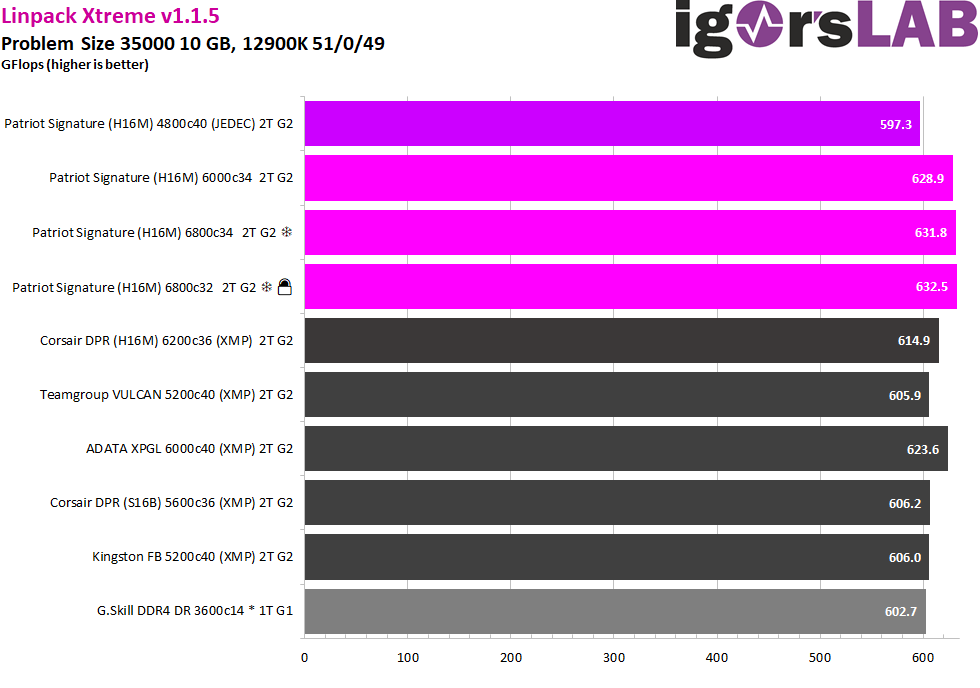
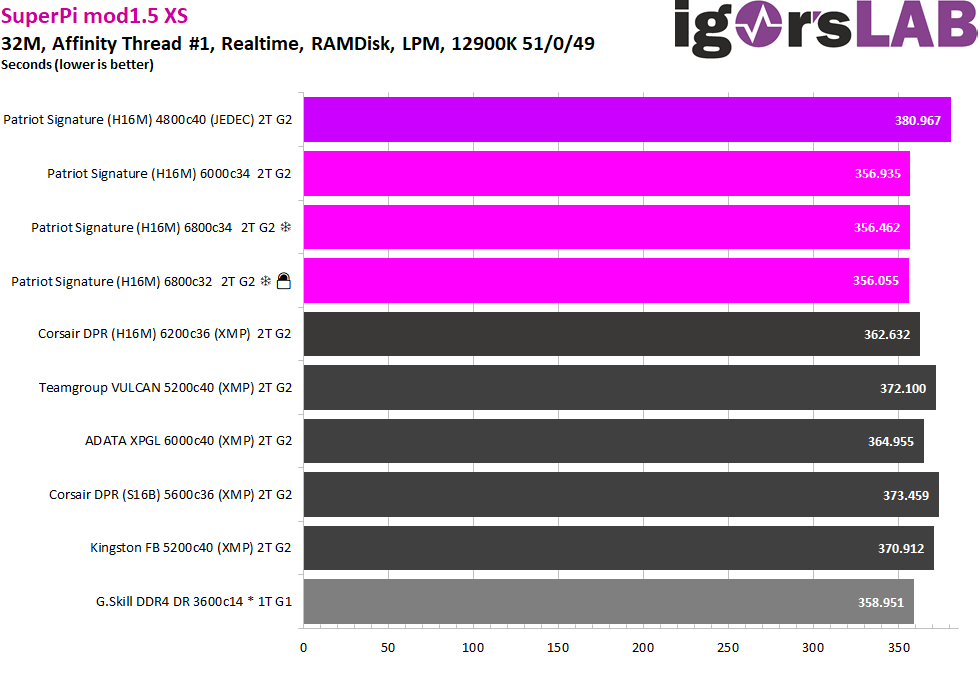
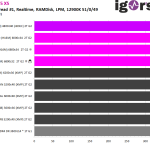
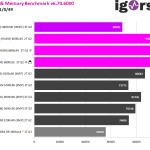
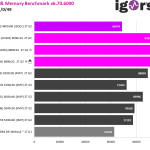
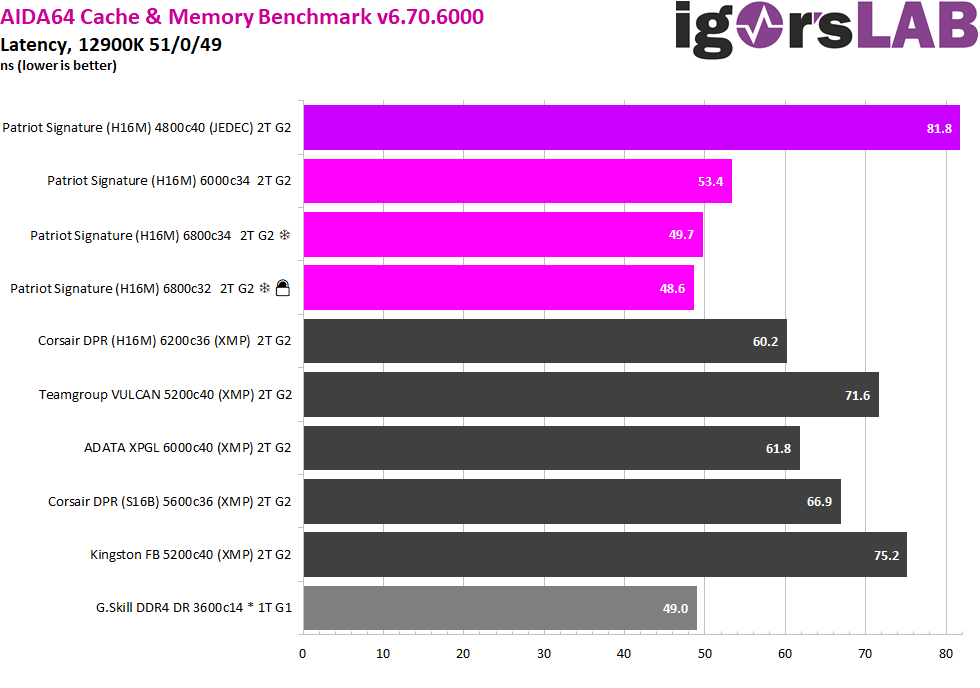
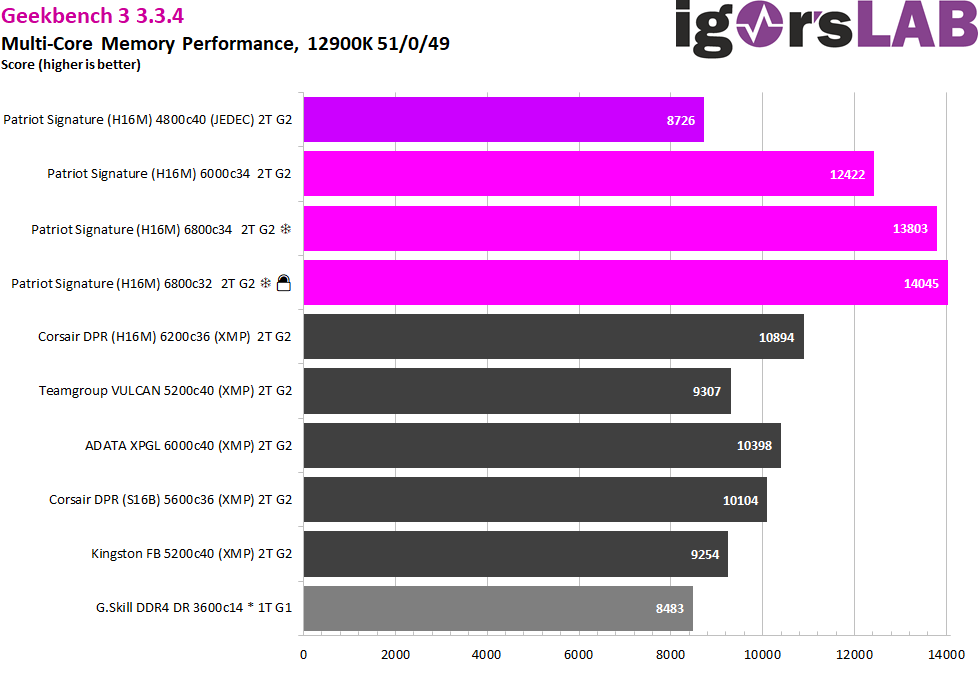




















5 Antworten
Kommentar
Lade neue Kommentare
Urgestein
Urgestein
Neuling
Veteran
Mitglied
Alle Kommentare lesen unter igor´sLAB Community →